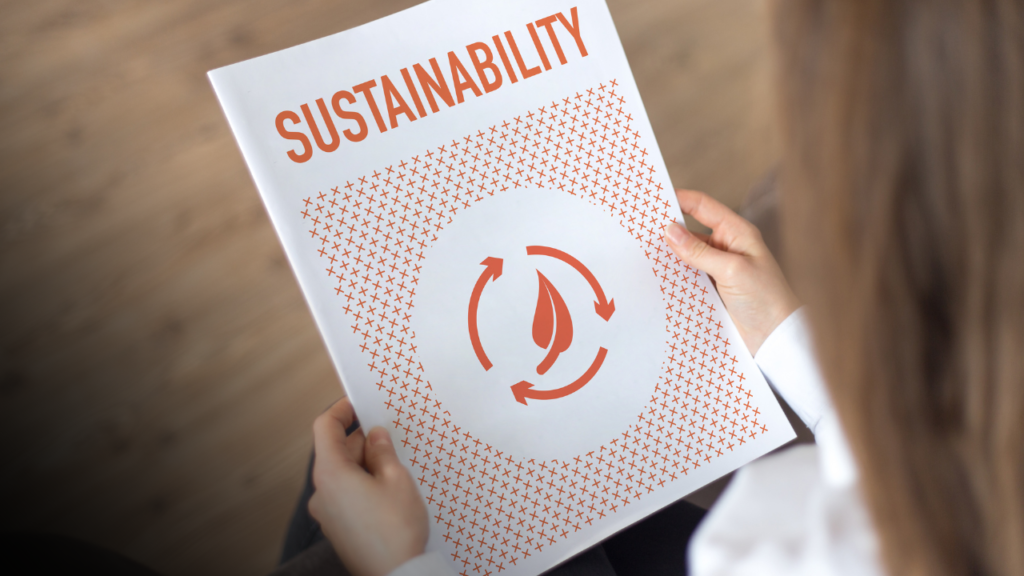I am passionate about sustainability. But I am also a realist. There is not always a simple answer. If only the issues were as easy as not buying water in plastic bottles or remembering to turn off the lights when we leave the room.
Sustainability is particularly interesting when it comes to transportation—an industry that affects every single one of us and all businesses. A recent study pointed out that one of the biggest polluters are the semi-trucks that move our merchandise and goods around the country. Yet, the trucking industry is a critical part of the economy, transporting 71.6 percent of U.S. goods, totaling $10.4 trillion! But trucks are also a significant source of pollution. The transportation industry accounted for the largest portion (28 percent) of total U.S. greenhouse gas (GHG) emissions in 2022. Of that, 23 percent is from the trucking industry.
Some suggest we should go electric with all the semi-trucks. Not so fast! Today, a clean-diesel truck can spend about 15 minutes fueling anywhere in the country, and then go on to travel about 1,200 miles before fueling again. In contrast, today’s long-haul battery electric trucks have a range of about 150 to 330 miles and can take up to 10 hours to charge. A new, clean-diesel long-haul tractor typically costs in the range of $180,000 to $200,000. A comparable battery-electric tractor costs near a half a million dollars. More than 95 percent of trucking companies are small businesses operating ten trucks or fewer. Complying may prove ruinous, and that will eventually impact our supply chain (which has already suffered during and since the COVID pandemic). Never mind the drain on the electric power grid to power fleets of trucks – the consumption is more than that of most cities, so it is a big problem. We have some work to do!
In addition, our entire infrastructure is geared toward fossil fuels. So, when we seek to change ground transportation, we cannot just snap our fingers and make it so. The answer today in terms of transportation is to get more efficient, to get better at it. Additionally, today, the hybrid model is actually the better answer for now. Americans consume a great deal of fuel in short trips around town, and those trips could be all electric. When we need to go long haul, then use fossil fuels. Consequently, fossil fuel consumption goes down significantly, pollution decreases, and we are using much less fossil fuel in the city/suburbs for those errands and short trips. The hybrid approach is an answer. But we need to keep working on the problem.
Some of the challenges to switching over to electric for our transportation needs/supply chain needs include:
- Availability and Coverage: There is a need for a widespread network of high-capacity charging stations. Unlike personal electric vehicles (EVs), trucks require more power and thus more robust charging facilities. Charging station placement would need to strategically support our long-haul trucking industry.
- Charging Speed: Electric trucks need fast charging to minimize downtime. Current charging technology may not support the quick turnaround times needed for commercial trucking.
- Electricity Demand/Peak Demand Management: This would require significant upgrades to existing grid infrastructure to ensure reliability and prevent outages.
- Infrastructure Investment: Building and upgrading the necessary infrastructure requires substantial financial investment. This includes the cost of installing charging stations, upgrading the power grid, and maintaining these systems.
- Our political system tends to get gridlocked when large infrastructure projects are needed. Addressing these infrastructure challenges requires coordinated efforts from governments, private companies, and stakeholders across the energy and transportation sectors.
We could be doing completely without petroleum right now. When Rudolf Diesel designed the engine back before World War I, who would have thought that most of them today could be generally converted and run on peanut oil? Another option we could consider is nuclear energy. For example, all navy submarines in the United States fleet are nuclear (as are many of our naval carriers). Nuclear submarines are quiet, efficient, and generate a lot of energy. We could also be utilizing wind and solar in many more places. However, again, we have a coal-, gas-, and petroleum-based infrastructure and lobbyists, as well as employees and others that support those industries.
Regardless of the complexities, for all industries, including my own (electronics), being aware of these infrastructure and energy issues, and putting sustainability to the forefront is key. Sustainability issues to care for the environment are here to stay—and we need to make room for the future.
- https://www.eesi.org/papers/view/fact-sheet-the-future-of-the-trucking-industry-electric-semi-trucks-2023.
- https://www.epa.gov/greenvehicles/fast-facts-transportation-greenhouse-gas-emissions.
- Ibid
- https://www.trucking.org/news-insights/heavy-dose-reality-electric-truck-mandates.
- Ibid
- Ibid
- https://www.pembina.org/blog/6-key-factors-holding-back-charging-infrastructure-fleets
- https://en.wikipedia.org/wiki/Nuclear_navy.
